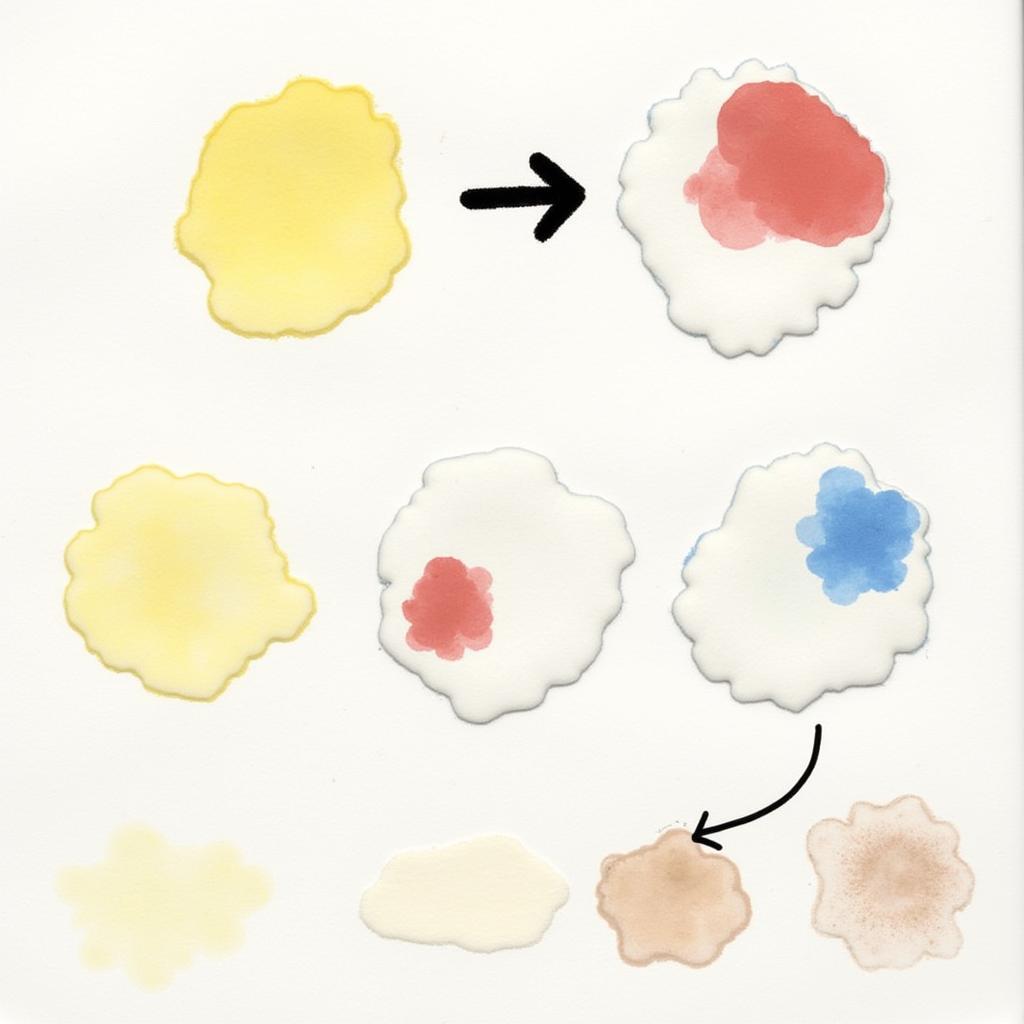Creating realistic skin tones is a fundamental skill for any artist, regardless of the medium. Whether you’re painting a portrait, sculpting a figure, or designing a character, understanding how to make skin tone color is crucial. This guide will delve into the nuances of mixing colors to achieve a variety of skin tones, from the fairest to the deepest. how to make skin tone color with paint
Understanding the Complexities of Skin Tone
Skin isn’t just one color. It’s a complex interplay of hues influenced by melanin, blood flow, and underlying fat deposits. Achieving a lifelike skin tone requires moving beyond basic flesh tones and considering the subtle variations that make each individual unique. What colors make peach skin tone, you might ask? It’s a fascinating exploration of color theory and practice.
Mastering the Basics: Primary Colors and Beyond
The foundation of any skin tone lies in the primary colors: red, yellow, and blue. By adjusting the proportions of these colors, you can create a vast spectrum of hues. Adding white lightens the tone, while brown deepens it, adding richness and complexity. Don’t be afraid to experiment with different ratios to find the perfect balance. You can also learn more about how to make skin tone color paint.
How to Make Light Skin Tones
For lighter skin tones, start with a base of white and gradually introduce small amounts of yellow, red, and a touch of blue. Too much red can result in a pinkish hue, so use it sparingly. A tiny amount of brown can add warmth and depth.
 Creating Light Skin Tones
Creating Light Skin Tones
How to Make Medium Skin Tones
Medium skin tones require a more balanced approach. Start with equal parts yellow and red, then add a smaller amount of blue. White can be used to lighten the mixture, while brown adds depth and warmth.
How to Make Dark Skin Tones
Darker skin tones begin with a base of brown. Red and yellow are added to create warmth and vibrancy. Blue is used sparingly to add depth and prevent the tone from appearing flat.
Adding Depth and Dimension: Warm and Cool Undertones
Every skin tone possesses either warm or cool undertones. Warm undertones lean towards yellow and gold, while cool undertones have hints of blue and pink. Identifying the undertones is crucial for achieving a realistic result. how to make skin tone color with watercolor can also provide insights into achieving realistic skin tones with this medium.
Different Mediums, Different Techniques
The techniques for creating skin tones vary depending on the medium. Painting with oils or acrylics allows for blending and layering, while watercolor requires a more transparent approach. how to make skin tone with colored pencils offers a different set of challenges and rewards. Understanding the specific qualities of your chosen medium is essential.
“Observing real-life skin tones under different lighting conditions is invaluable for any artist,” says renowned portrait artist, Amelia Dubois. “Pay attention to the subtle shifts in color and the interplay of light and shadow.”
Conclusion
Mastering the art of how to make skin tone color is a journey of observation, experimentation, and practice. By understanding the underlying principles of color theory and adapting your techniques to your chosen medium, you can create lifelike and expressive skin tones that bring your artwork to life. Remember, the key is to observe, experiment, and never stop learning.
FAQ
- What are the basic colors for skin tone?
- How do I adjust the tone for different ethnicities?
- How do undertones affect skin tone?
- What’s the difference between warm and cool undertones?
- How can I practice mixing skin tones?
- What are some common mistakes to avoid?
- How can I make skin tone look more realistic?
“Don’t be afraid to make mistakes. Every failed attempt brings you closer to understanding the complexities of skin tone,” advises renowned color theorist, Dr. James Wright.
More to Explore
Interested in learning more? Check out our other articles on color mixing and artistic techniques:
Need further assistance? Contact us at Phone Number: 0373298888, Email: [email protected], or visit us at 86 Cau Giay, Hanoi. We have a 24/7 customer service team.

